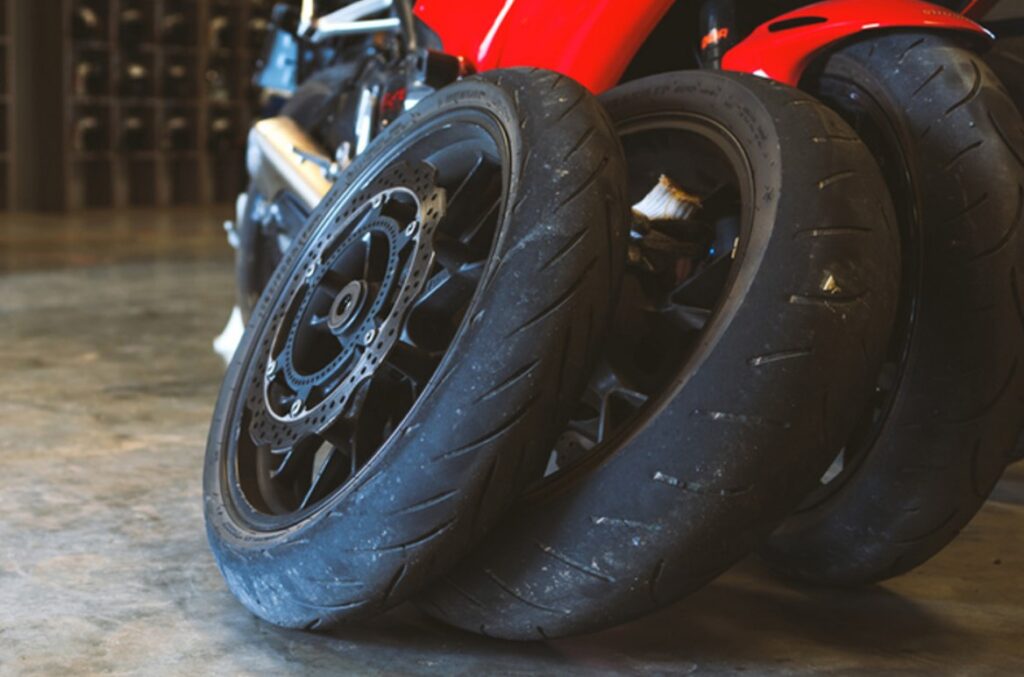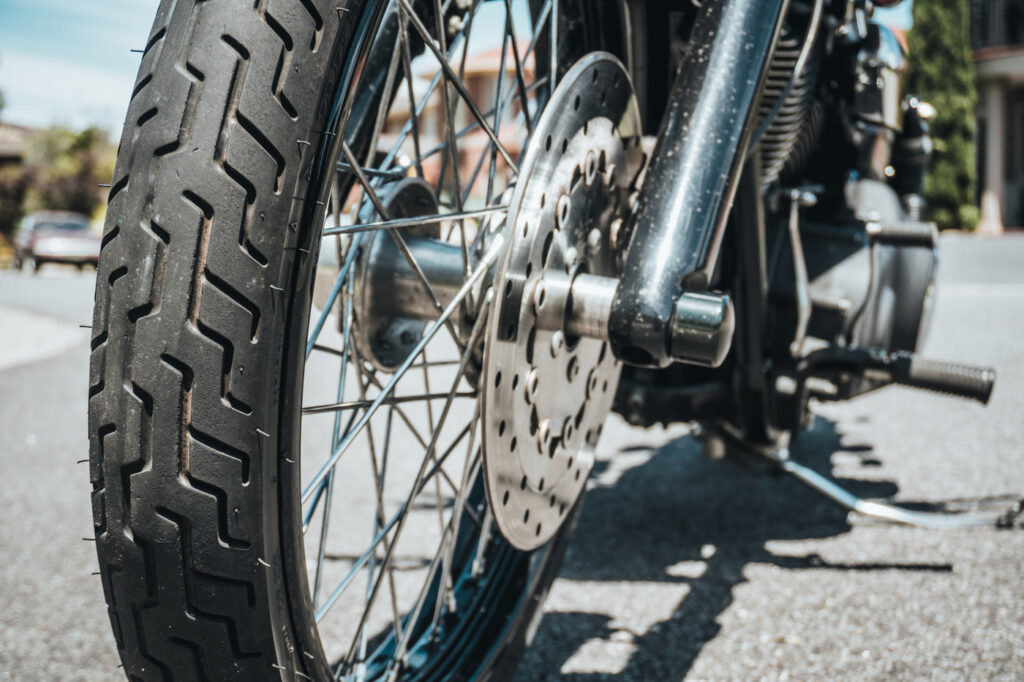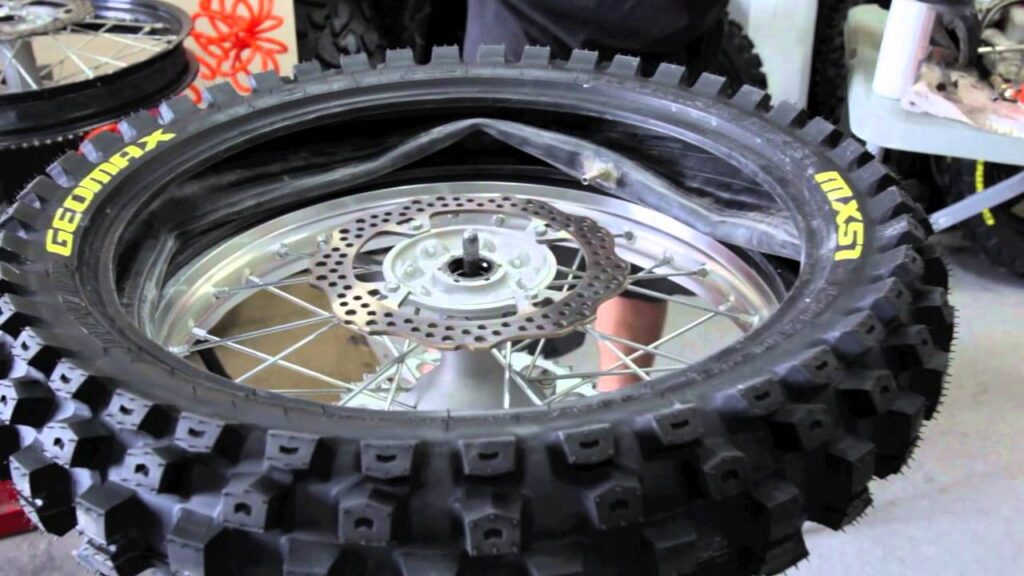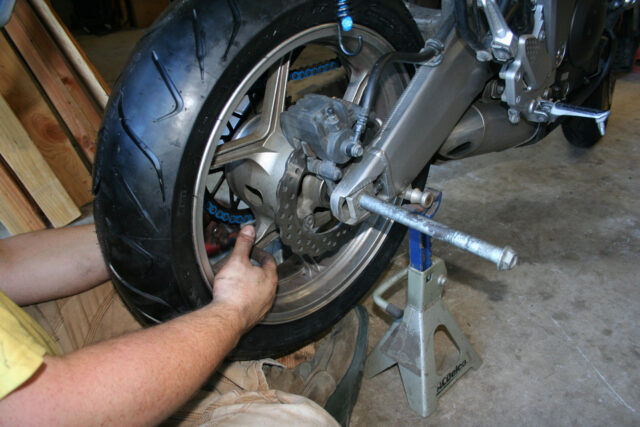Changing tires is a routine maintenance task for motorcycle owners, but it’s a task that requires precision and skill. Unlike changing the tires on a car, motorcycle tire changes come with their own set of techniques and considerations.
In this comprehensive guide, we will delve into the intricacies of motorcycle tire change, highlighting the essential techniques and key differences that set it apart from traditional vehicle tire changes.
Why Motorcycle Tire Changes Matter
Motorcycle tires are the vital connection between your bike and the road. They directly influence your riding experience, handling, and safety. Regularly changing your motorcycle tires is crucial for several reasons:
- Tread Wear: Over time, tire treads wear down, affecting grip and traction. Worn tires can lead to a loss of control, especially in wet or slippery conditions.
- Safety: The condition of your tires is paramount to your safety while riding. Worn or damaged tires can result in accidents and injuries.
- Handling: Properly maintained tires improve your motorcycle’s handling, responsiveness, and stability on the road.
- Performance: Fresh tires provide superior performance, enhancing your riding experience, including cornering and braking.
Changing Motorcycle Tires: Techniques and Key Differences

Changing motorcycle tires is a specialized skill that requires practice and precision. Here are the techniques and key differences that set it apart from traditional vehicle tire changes:
- Wheel Removal: Removing the wheel is the first step in changing motorcycle tires. This involves loosening the axle nut and, in the case of front tires, disconnecting the brake calipers. Ensure your bike is securely supported during this process.
- Balancing: Balancing is essential to prevent vibrations and ensure even tire wear. Motorcycle wheels are more sensitive to balance, so investing in a motorcycle-specific wheel balancer is advisable.
- Tire Removal: Tire removal involves breaking the bead, which is the seal between the tire and the rim. This is typically done using a tire-changing stand, tire irons, and plenty of patience. Take care not to damage the rim during this process.
- Mounting the New Tire: When mounting the new tire, ensure it’s properly aligned with the rim. Lubricate the tire bead and use tire irons to ease the process. Avoid using excessive force to prevent damage.
- Balancing the Tire: Once the new tire is mounted, it must be balanced. Motorcycle tires are sensitive to imbalance, and an imbalanced tire can lead to dangerous wobbling at high speeds. Use the wheel balancer to achieve precise balance.
- Proper Inflation: Accurate tire pressure is vital for optimal performance and safety. Consult your motorcycle’s manual for the recommended tire pressure. Use a reliable pressure gauge to ensure the tire is inflated to the correct level.
- Wheel Installation: Reinstall the wheel, ensuring that it’s properly aligned. Torque the axle nut to the manufacturer’s specifications and reattach the brake callipers.
- Safety Precautions: Changing motorcycle tires involves handling tight beads and using tire irons, which can be physically demanding. Exercise caution to avoid injury during the process.
Key Differences from Traditional Vehicle Tire Changes

While changing motorcycle tires shares similarities with traditional vehicle tire changes, there are notable differences:
- Bead Shape: Motorcycle tires have a more pronounced bead shape compared to car tires. This shape requires specific techniques and tools to break the bead and mount the tire accurately.
- Wheel Balancing: Motorcycle wheels are smaller and more sensitive to imbalance. Proper wheel balancing is critical to prevent handling issues.
- Precision: Due to the smaller and more agile nature of motorcycles, precision is paramount when changing tires. Even minor errors can have a significant impact on performance and safety.
- Manual Dexterity: Changing motorcycle tires often requires a higher level of manual dexterity and tire-changing skills, which can be acquired through practice and experience.
Expert Tips for Motorcycle Tire Changes
To ensure a successful motorcycle tire change, consider the following expert tips:
- Consult the Manual: Always consult your motorcycle’s manual for tire specifications and recommended pressure. This information is crucial for tire selection and inflation.
- Invest in Quality Tools: High-quality tire irons, a bead breaker, and a wheel balancer are essential for safe and effective tire changes.
- Lubrication: Proper lubrication of the tire bead is essential for smooth mounting and to prevent damage.
- Balance Carefully: Take your time when balancing the tire. Ensure it’s perfectly balanced to avoid handling issues at high speeds.
- Safety First: Prioritize safety at all times during the tire change process. Wear safety gear, and exercise caution to prevent accidents or injuries.
Signs That Indicate the Need for a Motorcycle Tire Change
- Tread Wear: One of the most common signs that it’s time for a motorcycle tire change is excessive tread wear. Inspect your tires regularly, and if you notice that the tread depth is approaching the wear indicators or is significantly uneven, it’s time to consider replacing them. Worn-out tread reduces grip and traction, which can be especially dangerous in wet or slippery conditions.
- Cracks and Dry Rot: Cracks, weathering, or dry rot on the tire’s sidewalls are clear indications that the rubber has deteriorated and lost its flexibility. Such damage can compromise the tire’s structural integrity and safety. If you notice these signs, it’s advisable to replace the tires, even if the tread appears to be in good condition.
- Punctures and Cuts: If you’ve had a puncture or notice cuts in the tire’s sidewall or tread area, it’s essential to assess the extent of the damage. Small punctures can often be repaired, but large or multiple punctures may necessitate a tire replacement.
- Vibrations and Handling Issues: If you experience unusual vibrations, wobbling, or handling problems while riding, it could be due to tire issues. Imbalanced or damaged tires can cause these symptoms.
Conclusion: Mastering the Art of Motorcycle Tire Change

Changing motorcycle tires is a crucial aspect of motorcycle maintenance, affecting safety, handling, and performance.
While it requires specific techniques and tools, mastering the art of motorcycle tire change is achievable with practice and attention to detail.
Motorcycle enthusiasts who prioritize precision and safety in the tire-changing process can enjoy an enhanced riding experience and peace of mind on the road.







